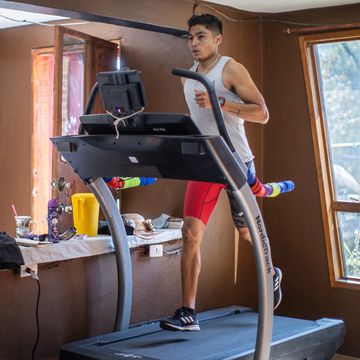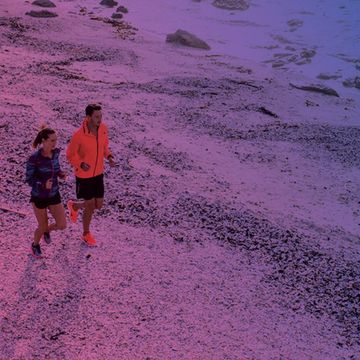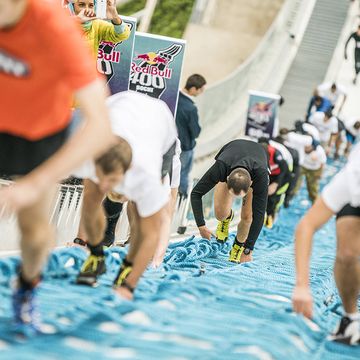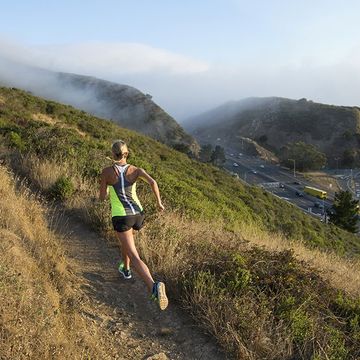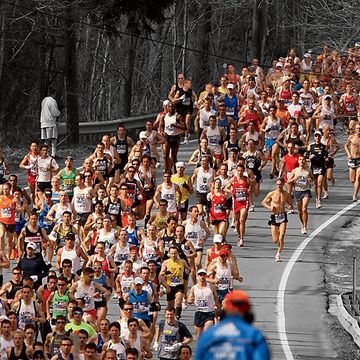When Allie Ostrander reached the final leg of the 2014 Nike Cross Nationals last December, she blazed over a series of hills and crossed the finish line of the 5K course in 17:19 to earn the individual title.
The Alaskan native had her hometown hills—part of her strategic summer training regimen—to thank. They conditioned her to power through the short, steep inclines in the race’s final 1K.
“It’s incredible how much a hill can take out of you,” says Ostrander, who will start her freshman year at Boise State this fall after graduating from Kenai Central High School in June. “The end of the race is when you’re hurting the most, so having the strength and being able to power through hills helped me.”
Training on hills in the summer is an important component to any cross country runner’s buildup. But don’t jump straight into hard, long repeats. There are better ways to incorporate climbs into your schedule.
A Gradual Incline
Jay Johnson, a coach who works with high school athletes as the director of Boulder Running Camps, knows that running hills can help in multiple ways.
“Hill training does a great job making you stronger in terms of muscles and tendons,” Johnson says. “It’s a great way to strengthen the posterior chain, which is weak for 95 percent of runners.” The posterior chain includes muscles like the gluteus maximus in your rear. Many common running injuries originate because of weakness in this area.
Johnson advises runners to incorporate hill work gradually. “Summer hill training is a time to build the aerobic system, not the time to do grueling workouts that build lactate,” he says. “There is a time and a place for those workouts, and that time is later in the fall. The key for high school runners and hill training is that the majority of a hill workout needs to be done aerobically.”
Johnson recommends a long run on a hilly course once a week, coupled with semiweekly uphill strides of 100m–150m on a 1 percent grade, starting at 3200m pace.
The summer prior to her big win, Ostrander followed this pattern. Early on in her training cycle, she went for easy runs on hilly trails. This allowed her legs to adapt to hill running. In mid-to late summer, she eased into more intense workouts like repeats of 12 x 60-90 seconds up a moderately steep grade in sets of four, with a jog down the hill between reps and a half-mile jog between sets.
Climbing Time
Each summer, Greg Weich, head cross country coach at Broomfield (Colorado) High School, makes a weekly 45-minute trip with his team to the mountains outside Boulder for what he refers to as “summer foundational training.”
“These runs are usually between 60 and 70 minutes and generally include 1,000 to 1,500 feet of climbing,” Weich says. “This is the athletes’ first introduction to lactate threshold on the ascents and also serves to get the athletes ready for hill repeats later in the season.”
Climbs get steeper in July, when Weich and the team head to Golden Gate Canyon State Park in Golden, Colorado, for a three-day summer camp where athletes do two runs a day. To bridge the gap between the longer mountain runs and the fast, short hills, Weich uses strides and fartlek runs.
The Broomfield team will do more intense workouts as the season progresses. In the early season, they will do two sets of 5 x 40 seconds uphill at mile pace with a jog-down recovery. Eventually, they’ll get even more specific, with workouts like 3-5 x 3:00 at 5K race pace over a hilly course that includes at least two climbs of 30 seconds, with a 3-minute recovery jog.
The hills Weich’s teams run in the summer correlate with the courses they’ll be running in the fall. In 2011, he didn’t have his team prepared for the tough terrain of the state meet course, and they lost after being undefeated in the regular season. They were prepared for the terrain in 2013, thanks to the workouts—and won the Colorado 4A cross country championship.
When his athletes run hills the way they do, Weich says, they reap psychological rewards as well.
“Athletes who haven’t been strong hill runners gain confidence on these, particularly if they got to the mountains over the summer,” Weich says. “These tough sessions done as a team bring us together as a group.”
* * *
Hill Country
Steep inclines on courses across the nation challenge runners of all levels.
Mt. SAC, Walnut, California
The course at Mt. SAC produces some blazing times, but runners have to trudge up the famed Switchbacks, Poop Out Hill, and Reservoir Hill, which are between 200m and 400m long and are brutally steep and grueling.
Holmdel Park, Holmdel, New Jersey
“The Bowl” comes just after the halfway point of the 5K course at Holmdel Park, home to the New Jersey state championship. The steepness at the peak of the hill forces many to walk their final few steps.
Wayne E. Dannehl Cross Country Course, Kenosha, Wisconsin
The start line of the Foot Locker Midwest Regional race is an intimidating sight. Runners stare straight at a half-mile hill. The final 2 miles have rolling hills as well.
Norris-Penrose Event Center, Colorado Springs, Colorado
Hodgson Hill in mile 2 of the Colorado state championship course is almost as tough on spectators who want to get a view. Add in that the course is at altitude, and it’s one of the toughest state meet courses in the country.




